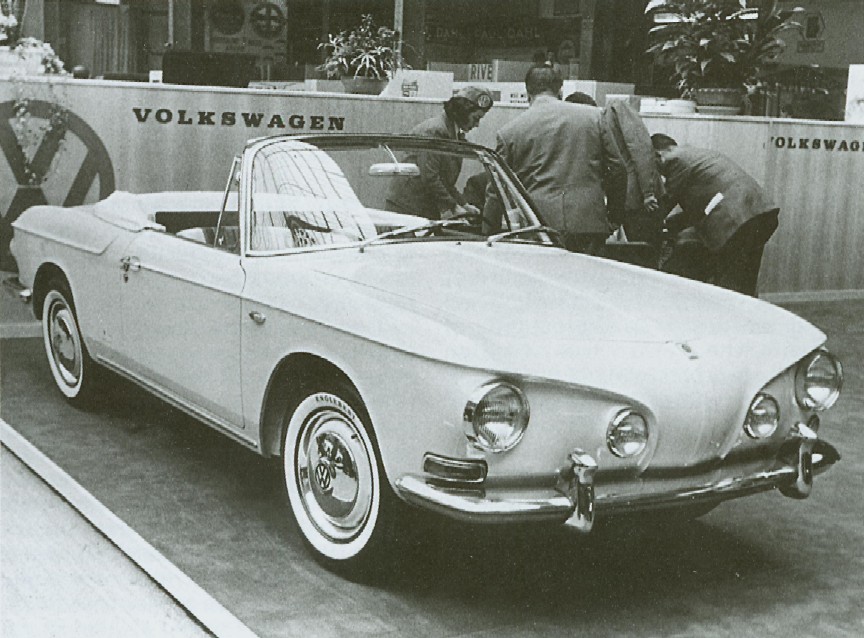
 T34 Cabriolet Story:
When Volkswagen decided to build the new VW 1500 series they always planned
to offer the Sports Coupe & Sports Cabriolet models, following the same marketing plan as the first Karmann Ghia. Carrozzeria
Ghia in Turin, Italy would design the Sports Coupe body, then hand a prototype off to the Wilhelm Karmann factory in
Osnabruck, Germany. Karmann would then prepare the Sports Coupe for production, work out all the details, make modifications
where necessary, and also create the Sports Cabriolet model. Ghia handed-off their VW 1500 Sports Coupe prototype to Karmann
in early 1960. Karmann reworked the design and had the two pre-production models available in April 1961 for press photos.
Then in September 1961 both models were on public display at the Frankfurt International Auto Show. Interestingly, in 2005
a Karmann engineer confided that the Frankfurt show Cabriolet did not have a functional top frame since there was not enough
time to design it before the show.
T34 Cabriolet Story:
When Volkswagen decided to build the new VW 1500 series they always planned
to offer the Sports Coupe & Sports Cabriolet models, following the same marketing plan as the first Karmann Ghia. Carrozzeria
Ghia in Turin, Italy would design the Sports Coupe body, then hand a prototype off to the Wilhelm Karmann factory in
Osnabruck, Germany. Karmann would then prepare the Sports Coupe for production, work out all the details, make modifications
where necessary, and also create the Sports Cabriolet model. Ghia handed-off their VW 1500 Sports Coupe prototype to Karmann
in early 1960. Karmann reworked the design and had the two pre-production models available in April 1961 for press photos.
Then in September 1961 both models were on public display at the Frankfurt International Auto Show. Interestingly, in 2005
a Karmann engineer confided that the Frankfurt show Cabriolet did not have a functional top frame since there was not enough
time to design it before the show.
It is believed that Karmann built 17 prototype Cabriolet models in the 1961-62 timeframe although Karmann has not
uncovered any records. These were for initial testing & evaluation, promotional events, and press photos. None of these
were offered to the public for sale although most ended up in the hands of prominent VW dealerships in Germany as show-
pieces for their dealership showrooms.
Volkswagen finally placed an order for "Nullserie" (pre-production) T34 Cabriolets in October 1962, one year after
the unveiling at Frankfurt. It is not known why there was a delay in this production, but it was common for the Cabriolet model
to be released 2 years after the Coupe. Karmann built 10 fully-functional production Cabriolets from October-December
1962 as well as 6 incomplete bodies not mated to a rolling chassis. At the end of 1962 VW cancelled the 341 program at
Karmann. These Cabriolets were also given to prominent VW dealerships but never offered for sale to the public.
There are currently six existing authentic T34 Cabriolets remaining in the world today, all in Germany. There is
one prototype from early-1962 and five production models from late-1962.



